This is a gifted set of RIDGWAY's Blue Danish - a traditional set that is about 40+ years old; it was seldom used, then stored in an attic for years before being gifted to me since I rather like pretty things. The crockery is lovely & thin, a bright cobalt blue pattern & has some matching covered vegetable bowls, various sized platters & bowls.
The history of the pattern is as follows:
One of the most famous patterns is ‘ Denmark’ or ‘Blue
Denmark’ produced by the business known as Furnivals Ltd and its successors.
The pattern has a fascinating history.
The Furnivals ‘Blue Denmark’ pattern is based on an
original produced in Copenhagen, Denmark, in the 19thCentury.
Its origins, however are even older and tradition has it that the pattern was
brought to Europe from China or Japan at some time in the late 18th
Century.
Frantz Heinrich Muller first produced the pattern at his
pottery in Copenhagen at some time between 1776 and 1779. After establishing
his pottery he travelled to Germany and recruited skilled workers from the
Meissen factories. It is likely he also discovered and brought back what was to
become known as the ‘Danish’
pattern.
Other names have been ‘Denmark’,
‘Blue Denmark’, ‘Danish Pattern’ and ‘Mussel Pattern’. Muller was a chemist
and his contribution may have been the development of the characteristic ultramarine
blue used on the wares. The pattern was immediately popular and when Muller’s
factory was rescued by the financial support of King Christian VII and became
the Royal Porcelain Factory of Copenhagen ‘Royal Copenhagen’, the ‘Danish’
pattern was central to its success – as it still is today.
On close examination the pattern consists of a repeating
pattern of mussels and stylized flowers traditionally in an under-glaze blue on
a white background. The pattern is complex, but not over-elaborate and sits
crisply on any pure white background.
To quote from the Pottery Gazette – “The effect pleases everyone with any sense at all of
neatness and clarity. It seems somehow to typify the typical Danish love of
hygiene in food preparation and service, this quality being self-expressed in
terms of coolness. There is a clean, satisfying, superlative beauty in it that
seems to conjure up a sense of health and vitality.”
Furnivals
were the most prominent of several Staffordshire potters to produce versions of
the pattern based on the Royal Copenhagen original. Company records suggest
that the pattern was produced from the 1850s and with virtually no modification
to the pattern or shape was produced until the closure of the business in 1968.I have only a very few bits of the Royal Copenhagen pattern since they are rather expensive
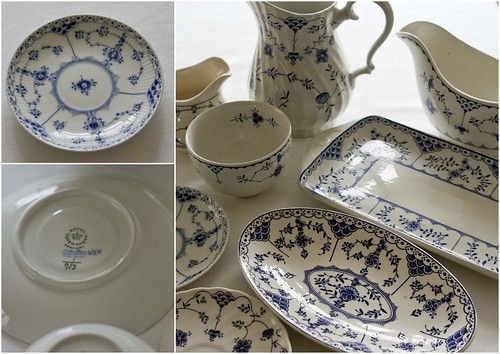
These patterns are similar - the lovely Blue Danish by Ridgway


DENMARK / MYOTT's pattern Finlandia
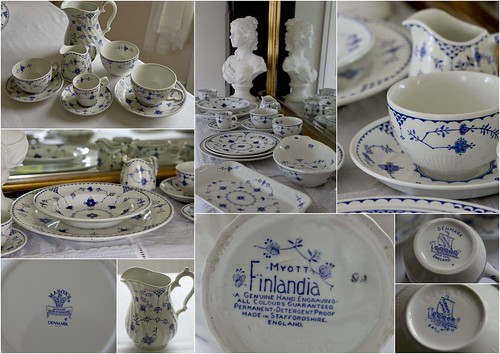
A version made by SAXON
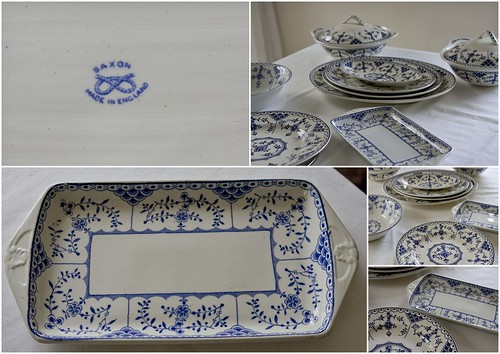
Royal Copenhagen & Furnivals versions together
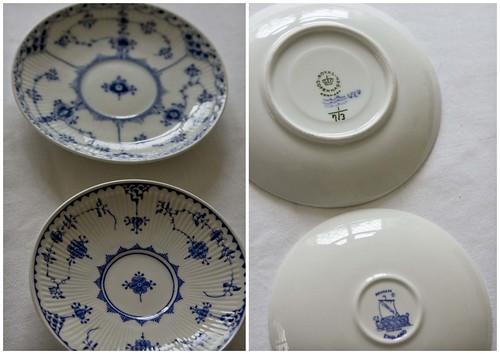
A similar pattern made by Ironstone

and some of the backstamps in my collection

For me, the test of any set is if I enjoy using & looking at it...
This was a New Year place setting for friends - do you like it?
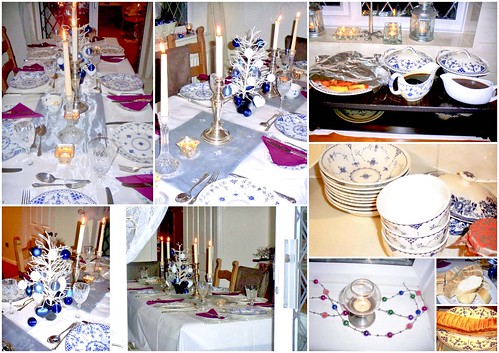
Are you a fan of traditional crockery? Can your set be mixed with other sets? What pattern do you favour & why?
Dee ♥


Great stuff! We need to visit to sample the goods!! Or you can come here and we can have a catch up time ! It will probably be the hols!
ReplyDeleteKathy
There is always a place at my table for you Kathy ... look forward to a catch up my dear friend. Have a great week xx
DeleteI love this pattern, Dee, and found the history fascinating. I had noticed the motif in dishware from several countries and now understand why. I have a few old, smaller plates with the pattern rimmed in gold trim but no founder's mark on the underside. They are thin and delicate. Any idea where these might have come from?
DeleteDeb
Fascinating Deb - I find the pattern really interesting, especially the variations on the pattern which fortunately all mix & match nicely. I need to use mine more often …
DeleteI googled 'blue danish pattern & gold trim' & didn't really get a definitive answer but if I find something, I will definitely let you know.
However, very thin pottery (like the top Blue Danish set of mine) tend to be good quality & so I imagine the thin ones you refer to must be similar even though they have no markings. Please do a close up on one of them & I will bear that in mind for you ….